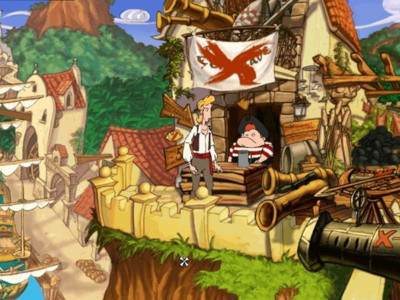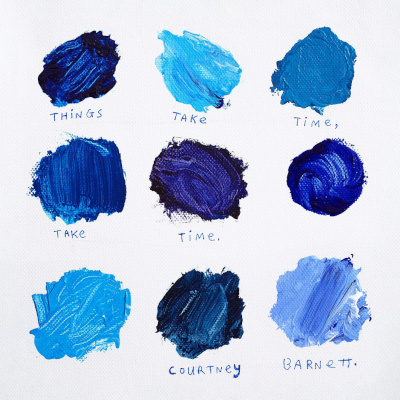
14 Dec 2021 - Graham
previously: things take time
James F.T. and Salem C. noticed similar omissions.
For one, I understated the social value of video games, which is, as James rightly wrote:
especially important with covid and doubly important for men who by and large do a lot of socialization shoulder to shoulder rather than face to face…
I’ve certainly played more games than many, and I’ve probably experienced more positive outcomes from that than many as well. I have made many lifelong friends through gaming and at the moment I am trying to move to Denmark in large part due to my time spent playing Diablo 2 as a youth (time that my parents said I was wasting).
I have avoided writing about the friendships I deepened by playing Warzone, including with James and Salem. I have avoided it because I haven’t found the right words to describe the way in which those friendships both moderated and sustained my addiction.
The game-makers brag that people who play with friends play for three times as long. This commodification of friendship feels skeevy. But perhaps it’s not so bad; at least it gives the game-makers an incentive to foster real connections.
Salem says he still plays video games to strengthen his muscles of moderation. He suggested that I might prefer abstinence to moderation. That would explain why I’ve also given up booze and sugar and eating mammals and social media and news and more.
James and Salem both noted that Warzone is only one game. Not all video games are the same, which is, happily, our topic today.
When I was 10 years old, I fell in love with Monkey Island 3: The Curse of Monkey Island. Monkey Island is less a video game than a series of interconnected puzzles.
At one point, for example, you need to prove you can find treasure. The fried chicken shop guy has a loose gold tooth. But how to get it? Maybe if you could steal someone else’s bubble gum and then…

Monkey Island never felt addictive. I didn’t persistently crave it. It didn’t sour other kinds of fun.
Why not? Perhaps because Monkey Island is finite–it’s single-player and it has an end.
Because it’s finite, Monkey Island doesn’t reward grinding. Sure, I sometimes tried to give every object I had to everyone I met. But grinding the puzzles was about as effective and enjoyable as trying to guess a 3 digit combination lock.
It was often a frustrating game. Had the solutions been obvious, it wouldn’t have been fun. Still, the frustration was always fair. The challenge of Monkey Island was always solvable.
From age 13 to 18, Halo parties were the highlight of my week. We’d stay up all night playing, drinking root beer, and pretending to do lines of smarties.
Halo is not like Monkey Island. While Monkey Island is silly and single-player, Halo is self-serious and competitive. Yet Halo never felt addictive either.
I preferred Halo to most kinds of fun. Halo, like Dofus later, often replaced homework and other forms of socializing. But everything we do replaces something else. Our time is limited.
Halo never felt addictive because it never compromised other kinds of fun. Even at Halo parties, we goofed off in diverse ways. I didn’t pine for the game while we threw a frisbee outside. So, like Monkey Island, Halo was a contained pleasure.

I could only play Halo at friends’ houses. My parents had banned video games. The distance meant I couldn’t make a habit of playing and I didn’t need to actively resist the urge to play.
But this environmental limit can only be part of the explanation. When a friend left an Xbox with us (I pitied them for going abroad for a whole summer without video games) I didn’t play Halo in an addictive way.
Perhaps the real difference between Halo and Warzone is that Halo was never designed to be addictive.
In 2001, Microsoft made millions selling Halo, but they didn’t make more money if people played the game more. They had incentives to make the game fun so that people would buy copies and sequels and Xboxes. But addiction was an accidental by-product. Addiction was not, itself, profitable.
This changed in 2004 with the release of World of Warcraft. World of Warcraft proved that selling subscriptions could be geometrically more profitable than selling copies. At its peak, 100 million players paid $15 every month for the right to enter the World of Warcraft.
The subscription model allowed game-makers to profit more directly from “player engagement.” This revenue model shifted video game design away from limited doses of fun (so you would buy the next game when you were done) and towards unlimited engagements (so you’d keep paying to play).
Still, subscriptions are a relatively crude way of profiting from “engagement.” Subscriptions don’t return more profits if the player plays 10 hours a day instead of 10 hours a month.
The business model for Warzone might have been stolen from a scary Halloween story. Not like a spooky ghost story. Rather that story that still circulates on the nightly news about drugs in candy. The drug dealers, supposedly, want to hook kids by putting weed or LSD in the chocolate.
It’s unclear why drug dealers would target kids. Kid are unreliable customers–being more likely to tattle and less likely to have money.
Well, except, the game-makers have proved that the kids do have money. This summer, a neighborhood lemonade vendor excitedly told me he was funneling his profits into Fortnite. Thanks to fans like him, Fortnite has earned its owners, Epic, $15 billion over the last three years.
Fortnite and Warzone actually are the trench-coated drug dealer handing out free samples of “candy.” Free copies means more people will start playing. And no subscription fees means they’ll keep playing.
So how are these “free” games profitable?
In a freemium game, like Candy Crush–which 200 million people play on their phones–you can pay to win. When you’re about to lose, you can buy an extra life to keep going. It’s not unlike putting a quarter in the arcade to continue, except the arcade is with you when you’re bored at work, or on the shitter, or trying to fall asleep.
Warzone is less obviously manipulative, but no less profitable. You cannot pay to win in Warzone. You can only buy cosmetic upgrades, like outfits for your character.
They might seem silly, but these “in-game micro-transactions” provide a direct mechanism for profiting from player “engagement.” The more time and energy you invest in the game, the more likely you are to spend a few bucks on a silly outfit.
Given hundreds of millions of players, these few bucks add up quickly. In 2020, Warzone, Candy Crush, and even a rebooted World of Warcraft each earned more than $1 billion for just one company: Activison-Blizzard. From all of their games, in 2020, Activison-Blizzard earned a total of $8.4 billion.
There is no reason for game-makers like Activison-Blizzard or Epic to guard the thin line between player “engagement” and addiction. In fact, they have a legal obligation not to–preventing addiction would surely diminish profits and thus breach their duty to maximize shareholder value.
If I could wave a magic legislative wand, I’d pass one reform: Games can only charge up-front. Free games must actually be free. No in-game-ads. No subscriptions. No pay-to-win. No in-game micro-transactions.
Maybe this reform could save video games from the game-makers. Maybe if we removed the perverse financial incentives, then, rather than having so many games that frustrate us in order to “engage” us, we might have more games designed for fun.

Two weeks ago, on Sidetracked, we listened to Sleep’s “The Sciences,” a dark noodle-y stoner metal jam.

Last week was Courtney Melba Barnett’s just-released album “Things Take Time, Take Time,” which is singer-songwriter story-telling-y if that’s more your speed.
next post: play